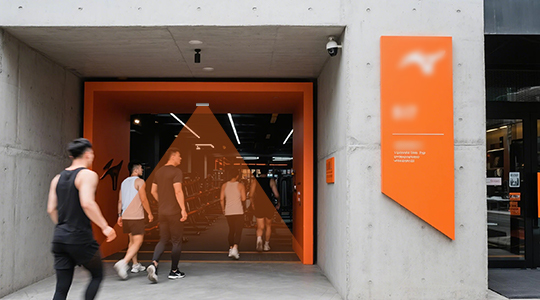Alright, let’s talk about figuring out how many people are actually using the gym at any given time. It became a bit of a project for me recently, mostly because things were feeling really crowded during peak hours, and we needed some real numbers, not just guesses.
Starting Out: Why Even Bother?
So, the first step was realizing we had a problem, or at least, a question. How busy is the gym? When are the real peaks? Relying on front desk staff to eyeball it wasn’t cutting it. They’re busy checking people in, answering phones, you know the drill. We needed something automatic to get consistent data.
Looking at Options
I started digging around to see what’s out there. You’ve got a few ways to do this:
- Old School Clickers: Yeah, like the kind security guards use. Simple, cheap, but totally manual. Someone has to stand there clicking away. Not practical for all-day counting.
- Break Beams: Those infrared beams across a doorway. Someone walks through, breaks the beam, count goes up. Seemed okay, maybe a bit basic. Worried about accuracy if people lingered or walked through together.
- Thermal Sensors: These detect body heat. Sounded a bit more advanced.
- Cameras with Software: Using overhead cameras to actually ‘see’ and count people. This seemed like the most potentially accurate, but also maybe the most complex and expensive.
Making a Choice and Getting Hands Dirty
After weighing things up, mostly thinking about budget and ease of setup (or what I thought would be easy), I initially leaned towards trying out a camera-based system. It felt like it could give us more than just a raw count later if we needed it, like tracking movement flow, though we just wanted headcounts for now.
So, I got a couple of specialized counting cameras. The plan was to mount them above the main entrance/exit points. Getting them physically installed wasn’t too bad – just needed a ladder and a drill. The tricky part was running the network cables back to our office switch. Had to fish wires through the ceiling, which is always more annoying than you think it’s going to be.

Setting Up the ‘Brains’
Once the cameras were mounted and plugged in, I had to configure the software. This involved logging into each camera’s web interface through my laptop. I had to define the counting lines – basically drawing virtual lines on the camera feed where people would cross to be counted in or out. This took some tweaking. Initially, I had issues with shadows triggering false counts, especially in the late afternoon sun. I also had to adjust the sensitivity because sometimes luggage or big gym bags were being counted as people.
I spent a good few hours watching the live feed and comparing the automatic count to what I saw happening. If someone walked in, did the ‘in’ count go up? If they walked out, did the ‘out’ count increment? Made lots of little adjustments to the line placement and detection zones.
Checking the Numbers
The system came with a basic dashboard I could access on my computer. It showed the current occupancy and historical data charts. For the first week, I made a point of doing manual spot checks. A few times a day, I’d quickly count people myself and compare it to the system’s number. It wasn’t perfect, but it was usually pretty close, definitely way better than guessing.
What We Learned (The Payoff)
Having this data flowing in was eye-opening. We confirmed our suspected peak times, but also found some mini-peaks we hadn’t really noticed before, like a lunchtime rush that was busier than we thought. It helped us adjust staffing schedules slightly, especially for floor staff and cleaning, to better match the actual usage patterns. We could also see, clear as day, when the gym was nearly empty, which sparked some ideas about maybe running special off-peak promotions.

Ongoing Stuff and Final Thoughts
It’s not entirely “set it and forget it.” Occasionally, a camera might need a reboot if it drops off the network (Wi-Fi can be spotty in some corners of the building, learned that the hard way). And sometimes, really unusual lighting conditions can still throw off the count temporarily. But overall, the effort was worth it.
Going through this process taught me a lot. It wasn’t super complicated, but it required patience, especially during the setup and calibration phase. Having real data has been way more useful than just relying on gut feelings about how busy the place is. If I were doing it again, I’d probably still go with cameras, but I’d spend more time upfront checking the network stability in the exact mounting locations.
